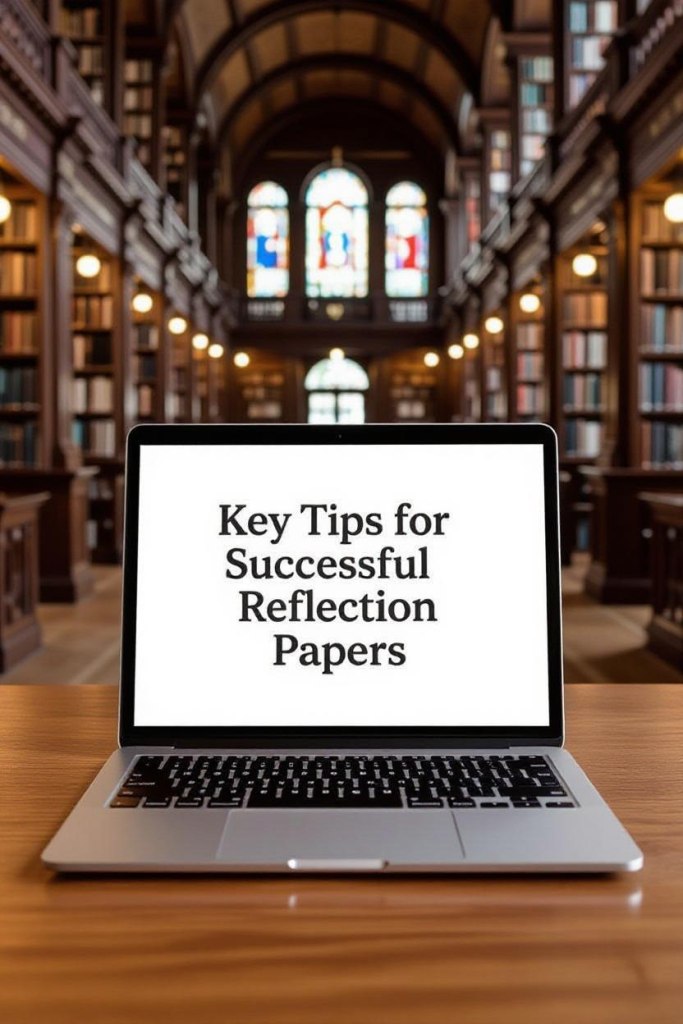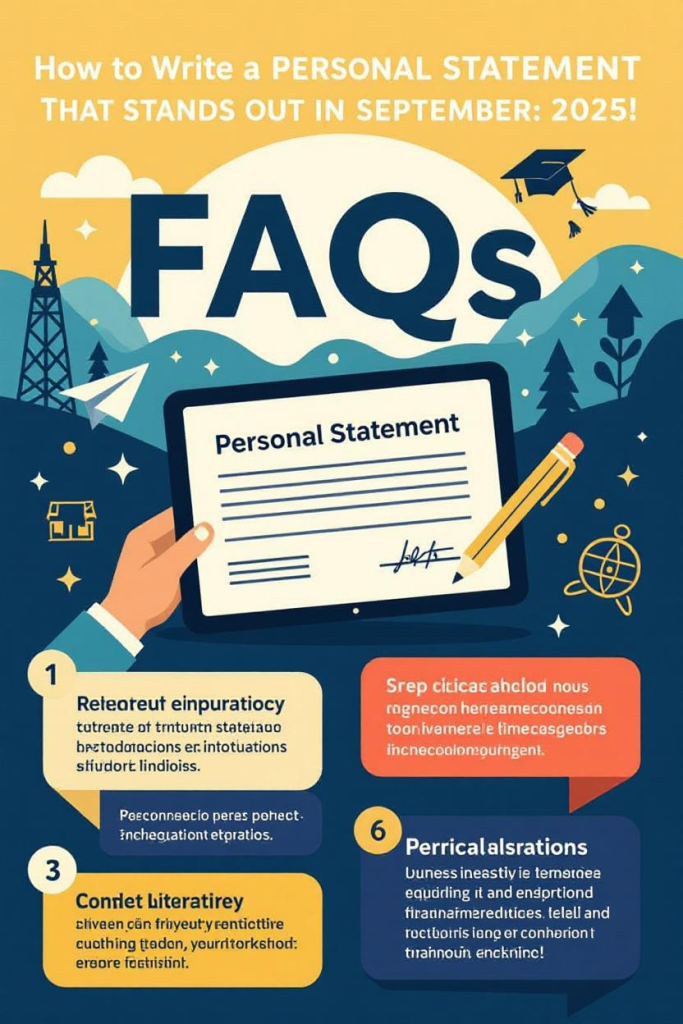
Writing a reflective essay gives you the chance to share a meaningful experience — whether it’s a difficult challenge, a turning point in your life, or even success in a class project. At its core, reflective writing is about examining how an event shaped your perspective and personal growth.
In this guide, you’ll discover how to write a reflective essay step by step. Essayassists.com will walk you through choosing the right topic, organizing your essay, and using proven reflection models. Let’s dive in with Essayassists’ expert guidance to help you craft the best essay online.
What Is a Reflective Essay?
A reflective essay is a type of academic writing that encourages you to explore a personal experience, analyze your feelings, and explain what you learned from it.
Unlike traditional essays that focus on facts, reflective essays are more personal and introspective. They use the first person (“I”, “me”, “my”) and highlight:
- What happened (the event/experience),
- How you felt about it,
- What you learned (personal growth, skills, or insights).
The ultimate goal is to connect personal experiences with broader understanding—whether academic, professional, or personal.
- evaluate what happened;
- explain how it made you feel;
- and discuss what you learned.
Therefore, your task is to explore a life experience, academic assignment, or important event. Then, link it to your personal growth or subject knowledge. Unlike traditional essays, these essays constitute a deeper level of self-exploration. They emphasize thoughts and feelings over pure facts.
Reflective essay format often uses personal pronouns like “I” and allows for a more personal tone while maintaining a degree of formality. The goal here is to describe, reflect, and demonstrate what you’ve learned.
Now that you understand the reflective essay meaning, let’s explore its main types.
Types of Reflective Essays: A Complete Guide for Students
Reflective essays are more than just personal stories — they are opportunities to think critically about experiences, analyze lessons learned, and connect them to broader contexts. Depending on the purpose of your writing, there are different types of reflective essays, each serving a unique role in personal, academic, or professional growth.
In this blog, we’ll explore the main types of reflective essays, their purposes, and examples to help you choose the right style for your next assignment.
1. Personal Reflection
Purpose: To explore your emotions, experiences, and personal growth.
This is the most common type of reflection. It allows you to share a life event, explain how it made you feel, and show what you learned.
Example: Writing about overcoming stage fright and how it improved your confidence.
2. Academic Reflection
Purpose: To evaluate your learning journey in an educational setting.
Academic reflection connects classroom experiences to personal development. It requires you to think about how assignments, research, or class projects shaped your skills.
Example: Reflecting on what you learned from completing a challenging term paper.
3. Professional Reflection
Purpose: To assess growth in a workplace or career-related setting.
Often used in internships, training, or professional development, this type helps identify strengths and areas for improvement in your career path.
Example: Reflecting on teamwork and leadership after completing an internship.
4. Experiential Reflection
Purpose: To link real-life experiences with theoretical knowledge.
Experiential reflection goes beyond personal feelings and connects events to broader concepts or academic theories.
Example: Connecting volunteer work at a shelter to theories of social responsibility learned in class.
5. Critical Reflection
Purpose: To question and analyze your own beliefs, values, or assumptions.
This type encourages deeper thinking. It’s about examining not just what happened but why it mattered — and how it challenged your worldview.
Example: Reflecting on how attending a diversity workshop changed your perspective on inclusion.
Why Understanding the Types Matters
Knowing which type of reflective essay you’re writing helps you focus your thoughts, choose the right examples, and meet academic expectations. Whether you’re writing for school, work, or personal growth, tailoring your approach ensures your essay is clear, impactful, and meaningful.
Would you like me to create a comparison table (with colors) that summarizes all five types of reflective essays for quick reference?.
| Type | Purpose | Example Use Case |
| Personal Reflection | To share personal experiences, emotions, and lessons learned. | Writing about a challenging semester and how you overcame academic stress. |
| Academic Reflection | To analyze learning experiences in an educational context. | Reflecting on the research process after completing a term paper. |
| Professional Reflection | To evaluate professional experiences and skill development. | Assessing teamwork skills after completing an internship. |
| Experiential Reflection | To connect a real-life event with theoretical concepts. | Linking volunteer work to social responsibility theories learned in class. |
| Critical Reflection | To examine beliefs, values, or assumptions critically. | Questioning personal views after attending a diversity workshop. |
Looking for guidance on other forms of academic writing? Learn how to tackle an analytical essay with clarity, precision, and a well-structured approach.
A Meaningful Topic for Reflective Writing: How to Choose the Right One

When it comes to reflective writing, the topic you choose can make or break your essay. A strong reflective essay isn’t just about retelling a story — it’s about sharing an experience that shaped your perspective, emotions, or growth. That’s why selecting a meaningful topic is the very first step toward crafting an essay that feels authentic and impactful.
Thus, strong reflection essays often begin with a simple event but grow into something more meaningful through writing and analysis. Accordingly, your topic should allow you to:
- Reflect deeply and honestly.
- Show how you’ve grown or changed.
- Follow a logical reflective essay format.
- Not sure how to get started? Here are some engaging reflective essay topic ideas that could inspire your next academic assignment!
20 reflective essay topics to inspire your next paper!
- A time you failed at something important.
Write about what you learned from failure and how it changed your approach to life.
- Your first day at university.
Reflect on expectations, fears, and how you adjusted to the new environment.
- Helping someone in need.
Show how this event helped you understand empathy and human connection.
- A difficult decision you had to make.
Explore the thoughts, emotions, and consequences that followed.
- Learning a new skill or hobby.
Describe the challenges and what the process taught you about patience or growth.
- A conflict with a friend or family member.
Reflect on communication, misunderstanding, and reconciliation.
- Experiencing cultural shock during travel.
Analyze how stepping outside your comfort zone helped you change perspective.
- Public speaking for the first time.
Share how it challenged your confidence and what you gained from the experience.
- Taking part in a group project.
Discuss teamwork, leadership, and lessons in cooperation.
- A teacher who changed your mindset.
Write about influence, inspiration, and long-term effects.
- Adapting to online learning.
Reflect on discipline, self-direction, and adaptability.
- Volunteering for a social cause.
Describe personal growth and the value of giving back.
- Overcoming a personal fear.
Show internal struggle and how overcoming it shaped you.
- Facing academic pressure or burnout.
Reflect on stress management and emotional resilience.
- Dealing with rejection or criticism.
Analyze how feedback helped you grow personally or academically.
- Witnessing an injustice.
Describe your reaction and how it shaped your view on social issues.
- A random act of kindness.
Show how small moments can lead to big realizations.
- Participating in a creative project.
Reflect on inspiration, feelings, and the creative process.
- A childhood memory that still affects you.
Connect the past with your present identity.
- Experiencing failure in a group setting.
Demonstrate lessons in humility and shared responsibility.
Here’s a full blog draft on the common and correct structure of a reflective essay:
Common and Correct Structure of a Reflective Essay
A reflective essay isn’t just about narrating an experience — it’s about looking back, analyzing, and showing how it shaped your perspective. To make sure your ideas flow smoothly, it’s important to follow a clear structure. A well-structured essay not only keeps your writing organized but also helps readers understand your journey of reflection.
Why Structure Matters
Good structure is the backbone of any academic paper. In reflective writing, it ensures that your story is more than a diary entry — it becomes a thoughtful piece of analysis. By dividing your essay into sections, you can balance narration (what happened) with reflection (what it meant).
The Three-Part Structure of a Reflective Essay
1. Introduction
Your introduction sets the stage. It should:
- Hook the reader with a question, quote, or short anecdote.
- Provide background or context about the experience.
- End with a thesis statement that explains what the reflection will focus on (the lesson learned, personal growth, or change in perspective).
✨ Example: “My first presentation in college was a nerve-racking experience, but it taught me valuable lessons about confidence and preparation.”
2. Body Paragraphs
This is where you dive deeper into your reflection. Typically, you’ll write 2–3 body paragraphs, each focusing on a key point.
What to include:
- Description: Briefly explain what happened.
- Feelings: Share your emotions and reactions.
- Evaluation: Consider what went well and what didn’t.
- Analysis: Connect the experience to bigger ideas, theories, or personal growth.
- Learning: Show how the event changed you or influenced future actions.
Use either:
- Chronological order → retelling events as they happened.
- Thematic structure → grouping ideas like leadership, teamwork, or resilience.
3. Conclusion
The conclusion ties everything together. It should:
- Revisit your thesis without repeating it word for word.
- Highlight the key lessons or insights gained.
- Show the relevance of your reflection for future experiences or goals.
✨ Tip: Avoid introducing new details in your conclusion — focus on wrapping up the story with meaning.
Sample Outline for a Reflective Essay
- Introduction: Hook + background + thesis.
- Body Paragraph 1: Describe the experience + initial feelings.
- Body Paragraph 2: Analyze what went well/poorly + lessons learned.
- Body Paragraph 3: Show how the event influenced personal growth.
- Conclusion: Summarize insights + connect to the future.
Would you like me to also create a visual infographic-style outline (with icons for intro, body, and conclusion) that students could use as a quick checklist while writing?
Topic chosen? Perfect, the next step in writing a reflective essay is understanding its structure.
A clear reflective essay outline helps organize your thoughts and ensures your story flows logically. Like most academic essays, a personal essay includes three main parts: an introduction, body paragraphs, and a conclusion. Let’s break them down!
Reflective essay example
Seeing a sample can make any type of academic work feel less overwhelming. Here is a simplified reflective essay example based on a common academic scenario: group work. Check it out before starting to craft your reflection:
Title: Lessons in leadership from a failed group Project.
In my second year of college, I joined a group project for a marketing class. I expected smooth teamwork — what followed was chaos. I didn’t anticipate the real stumbling block would be our inability to agree on ideas.
I took on a leadership role but lacked the confidence to make decisions. At the time, I avoided conflict and let others take over. This led to disorganization and last-minute work. Reflecting later, I realized that leadership requires communication and accountability.
This experience helped me recognize my need to develop soft skills. I’ve since worked on being assertive, and my next project went much smoother.
Reflective essay academic writing plan — one step at a time
Once you’ve reviewed reflective essay examples and selected a strong topic, it’s time to begin writing. The process doesn’t have to be overwhelming. Breaking it into small, manageable steps will help you stay focused and express your thoughts clearly.
Brainstorming and reflecting
The first challenge is choosing what to write about. To get started, try asking yourself:
- What moment has changed my understanding of something?
- When did I face a personal or academic challenge?
- What feedback or experience shifted my thinking?
Tip: Concentrate on an experience that taught you something. That’s the heart of reflection writing.
Develop a thesis statement
A good thesis statement of reflection paper sums up the main idea or transformation you’ll explore.
Example: “My failure to speak up during a group project taught me the importance of leadership, communication, and accountability.”
Your thesis should guide the entire paper, keeping your writing centered and purposeful.
An outline to follow
As was said before, the outline essentially serves as a guide for your personal reflection essay. Here is a little cheatsheet to use while you are writing your outline:
- Intro: Set the scene, introduce the experience, and present your thesis.
- Body paragraphs: Reflect on what happened, your feelings, what you learned, and how it changed you.
- Conclusion: Revisit your story and explain its relevance to your further actions or thinking.
Trust us, a structured outline is a real time-saver!
The first draft matters!
Begin with the personal essay introduction. Use a hook to grab the reader’s attention, describe the context briefly, and then present your thesis.
As you write the body paragraphs, balance narrative with analysis. Include relevant details, but concentrate on growth, not just storytelling.
Your opinion matters! However, always support it with reflection, not just your thoughts.
Revise and edit
Last but not least, editing. The first version is just the start. Set it aside, then return with fresh eyes. Read it out loud.
- Does the text flow?
- Do all parts support your thesis?
- Are your ideas clear and easy to follow?
Editing, as the final step, is where the real polish happens.
Essential Reflection Models: Mind Map, Gibbs’ Reflective Cycle, and More
Reflective writing can be challenging if you’re unsure how to organize your thoughts or analyze your experiences. Fortunately, there are structured reflection models that guide you through the process. Using these tools can make your reflective essay more focused, insightful, and meaningful.
In this blog, we’ll explore some of the most effective models for reflection, including mind maps, Gibbs’ Reflective Cycle, and other helpful frameworks.
1. Mind Map
What it is: A visual tool that organizes your ideas around a central topic.
How it works:
- Place the main experience or theme in the center.
- Branch out into categories such as feelings, challenges, outcomes, and lessons learned.
- Add sub-branches with specific examples or thoughts.
Why it helps: Mind maps are great for brainstorming and seeing connections between your experiences, emotions, and learning outcomes.
2. Gibbs’ Reflective Cycle
What it is: A structured six-step model for in-depth reflection, developed by Graham Gibbs.
Steps:
- Description: What happened?
- Feelings: How did you feel?
- Evaluation: What was good or bad about the experience?
- Analysis: Why did it happen?
- Conclusion: What could you have done differently?
- Action Plan: How will you apply this learning in the future?
Why it helps: Gibbs’ cycle encourages thorough reflection and ensures you consider both personal feelings and analytical insights.
3. What–So What–Now What Model
What it is: A simple three-step model ideal for students and professionals alike.
Steps:
- What? Describe the experience.
- So What? Explain why it matters.
- Now What? Discuss how you will act or apply the learning moving forward.
Why it helps: This model keeps reflection focused and action-oriented, making it easier to connect experiences to growth and future decisions.
4. Other Useful Models
- Kolb’s Experiential Learning Cycle: Focuses on concrete experience, reflective observation, abstract conceptualization, and active experimentation.
- Rolfe et al. Framework: Based on “What? So what? Now what?” but encourages deeper questioning and contextual understanding.
- Driscoll Model: A simple three-question approach similar to Rolfe but emphasizes decision-making and action plans.
Why Use Reflection Models?
Using a reflection model helps you:
- Organize your thoughts clearly.
- Balance description, analysis, and evaluation.
- Ensure your essay demonstrates personal growth or learning.
- Avoid vague or superficial reflections.
Final Thoughts
Reflection isn’t just about telling a story — it’s about learning from your experiences. By using mind maps, Gibbs’ cycle, or other reflection models, you can structure your thoughts, deepen your analysis, and produce essays that are insightful, meaningful, and academically strong.
If you want, I can also create a visual comparison table of the top reflection models for
Key Tips for Writing Successful Reflection Papers

Writing a reflection paper is more than summarizing an experience — it’s about analyzing, interpreting, and showing personal growth. Whether you’re reflecting on a class project, a life-changing event, or a professional experience, following the right strategies will help your essay stand out.
Here are essential tips to make your reflection papers clear, engaging, and impactful.
1. Be Authentic
Honesty is the heart of a reflection paper. Share your true thoughts, feelings, and reactions. Don’t exaggerate or invent experiences — readers respond to authenticity.
Tip: Reflect on both successes and mistakes to show real growth.
2. Balance Storytelling and Analysis
A strong reflection paper combines narrative and critical thinking. While describing what happened is important, your analysis of the event is what makes the essay meaningful.
Tip: Ask yourself: What did I learn? How did this experience change me?
3. Keep a Clear Focus
Stick to one central theme or lesson. Avoid including unrelated experiences, which can distract from your main reflection.
Tip: Use a thesis statement to guide your writing and ensure every paragraph supports it.
4. Use First-Person Pronouns Thoughtfully
Reflection papers are personal, so writing in the first person (“I”, “my”) is appropriate. However, maintain a professional and formal tone.
Tip: Avoid casual language; focus on clarity and thoughtful expression.
5. Organize Your Paper Properly
Follow a clear structure:
- Introduction: Set the scene, hook the reader, and state your thesis.
- Body: Describe the experience, analyze your reactions, and reflect on lessons learned.
- Conclusion: Summarize insights and connect them to future actions or growth.
Tip: Consider using a reflection model (like Gibbs’ cycle) to guide your organization.
6. Be Specific and Provide Examples
General statements like “I learned a lot” are not enough. Use concrete examples to illustrate your learning and personal growth.
Tip: Describe what you did, how you felt, and what the outcomes were.
7. Revise and Proofread Carefully
Reflection papers are more effective when they are polished. Review your essay for grammar, clarity, and logical flow. Reading aloud can help identify awkward sentences or unclear ideas.
Tip: Take a break before revising — fresh eyes make it easier to spot mistakes.
8. Connect Reflection to Future Action
A reflection paper isn’t just about the past — it’s about growth and applying lessons in the future. End with a thoughtful insight or plan for how the experience will influence your decisions.
Reflection Essay: You Are Ready!
Writing a reflection essay may feel intimidating at first, but now that you understand the process, the structure, and the key tips, you’re fully prepared to get started. Reflective writing isn’t just an assignment — it’s an opportunity to explore your personal growth, analyze experiences, and share meaningful lessons.
Take a Deep Breath — You’ve Got This
A reflection essay begins with you. Think about the moments that shaped your thinking, challenged you, or taught you valuable lessons. The good news? You don’t need a dramatic story — even small experiences can lead to powerful insights.
Follow Your Structure
Remember, a strong reflective essay follows a clear framework:
- Introduction – Set the scene, hook the reader, and include a thesis statement.
- Body – Describe your experience, share your feelings, analyze what happened, and reflect on what you learned.
- Conclusion – Summarize key lessons, connect them to your personal growth, and highlight how you will apply them in the future.
Using this structure ensures your essay stays focused, organized, and impactful.
Use Reflection Models for Guidance
If you’re unsure where to start, reflection models can help organize your thoughts:
- Gibbs’ Reflective Cycle – Guides you through description, feelings, evaluation, analysis, conclusion, and action plan.
- What–So What–Now What – Helps you focus on the experience, its significance, and future applications.
- Mind Maps – A visual way to brainstorm ideas and connections before writing.
These models provide a roadmap so your reflection is deep, meaningful, and structured.
Key Tips for Success
- Be authentic: Share your true feelings and insights.
- Balance story and analysis: Don’t just narrate; reflect on what you learned.
- Be specific: Use concrete examples to illustrate your points.
- Revise and proofread: Clarity, grammar, and flow matter.
Following these tips ensures your essay is not only well-written but also engaging and insightful.
Final Checklist Before You Start
✅ I have chosen a meaningful experience to reflect on.
✅ I have an outline ready with intro, body, and conclusion.
✅ I know the key lessons I want to highlight.
✅ I plan to use a reflection model for guidance.
✅ I am ready to write in a clear, authentic, and structured way.
Reflective Essay: Frequently Asked Questions

Reflective essays can feel challenging, especially if it’s your first time writing one. Here are answers to some of the most common questions students have about reflective writing:
1. What is the purpose of a reflective essay?
A reflective essay encourages you to analyze personal experiences, explore your feelings, and show how events influenced your growth, learning, or perspective. It’s not just storytelling — it’s about insight and self-discovery.
2. What point of view should I use?
Reflective essays are written in the first person (using “I”, “me”, or “my”) because they focus on your personal experiences and reflections.
3. How long should a reflective essay be?
Typically, reflective essays are 500–1,000 words, depending on your assignment. Always follow your instructor’s requirements.
4. How many paragraphs should a reflective essay have?
Most reflective essays have 3–5 paragraphs: an introduction, 2–3 body paragraphs, and a conclusion. You can adjust based on the depth of your reflection.
5. What is the difference between a reflective essay and a narrative essay?
- Reflective Essay: Focuses on analyzing experiences and lessons learned.
- Narrative Essay: Focuses on telling a story, often with less emphasis on reflection or personal growth.
6. Can I include examples in my reflection?
Yes! Specific examples make your reflection concrete and relatable. Describe events, your reactions, and outcomes to illustrate your learning.
7. Do I need a thesis statement?
Yes. A reflective essay should have a clear thesis that summarizes the main insight or lesson you gained from the experience.
8. Should I use a reflection model?
Using models like Gibbs’ Reflective Cycle or What–So What–Now What can help structure your thoughts and ensure your essay is thorough and organized.
9. How formal should a reflective essay be?
While reflective essays are personal, maintain a professional and clear tone. Avoid overly casual language, slang, or vague statements.
10. How do I conclude a reflective essay?
Your conclusion should summarize key lessons, revisit your thesis, and show how the experience will influence your future decisions or growth. Avoid introducing new events or ideas.
